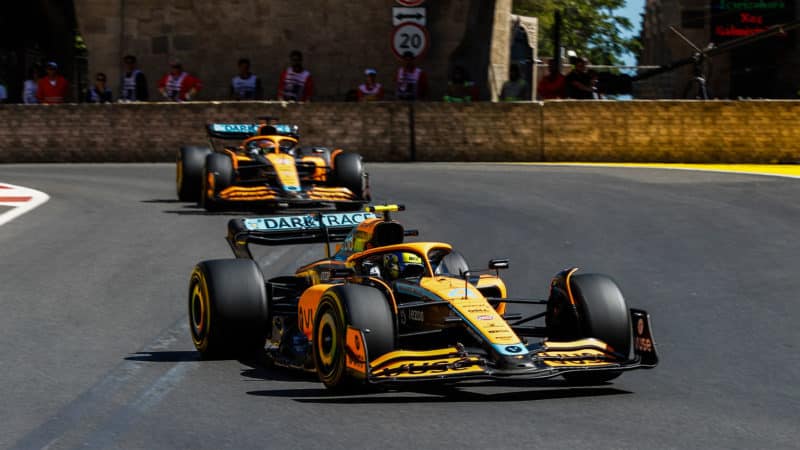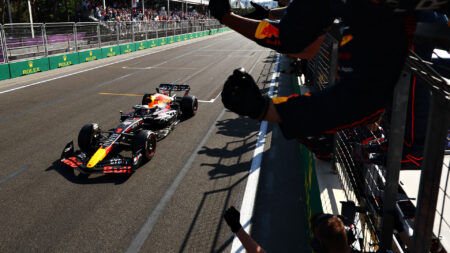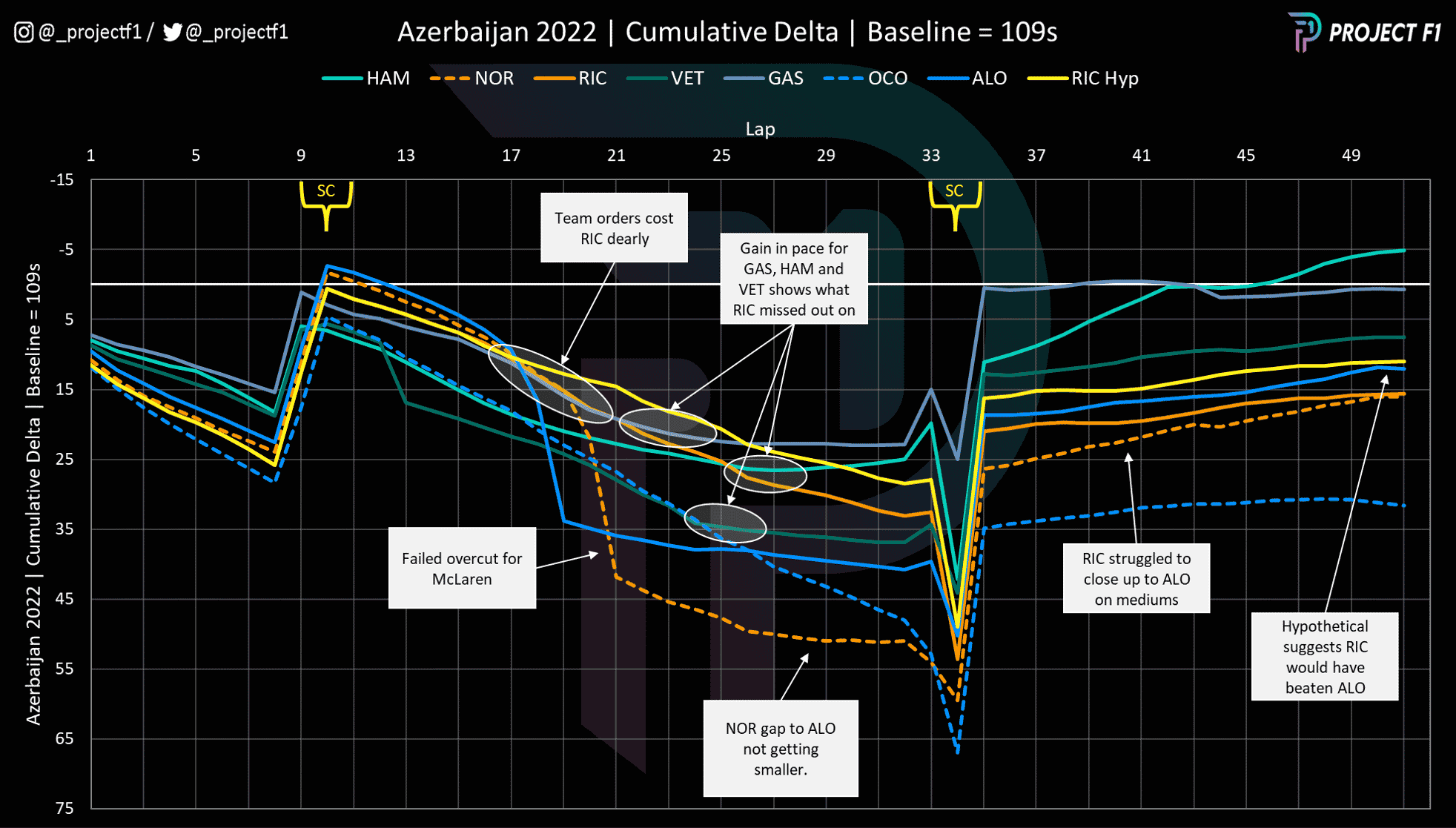Things were likely to be challenging given McLaren’s top speed struggles due to its high-drag concept – especially against Alpine whose car philosophy lends itself to a high maximum velocity.
McLaren opted to split the strategy and start Ricciardo on the hard tyre and Norris on the mediums – as shown later in chart X.
Both drivers trailed Fernando Alonso, with Ricciardo closing the gap on the harder tyre as displayed in Chart 1. From lap 16 it is clear that Ricciardo’s race is being disturbed by Norris.
In this situation, with both drivers on different strategies, it would have made sense to let Ricciardo through to see what he could do. However, McLaren opted to hold position, a decision that would cost them dearly both immediately and down the track.
Chart 2 – Tyre Strategy Summary

As shown above, Alonso pitted on lap 18, prompting Norris to go on for an overcut attempt and pit two laps later. This meant that Ricciardo had to hold position behind his team-mate for four laps out of 51 (eight per cent of the race) – sacrificing potential pace and race time.
The scale of this time lost can be inferred by going back to Chart 1 and seeing the benefit that Pierre Gasly, Lewis Hamilton and Sebastian Vettel would go on to receive by clearing traffic. Of course, some of this uplift in pace would be car and driver specific, but it is still a useful illustrative exercise.
So how did the overcut fare for Norris? Was Ricciardo’s pain worth the reward for the team?
Chart 3 – Pit Stop Gain/Loss

As Chart 3 above indicates, the overcut did not work at all. In fact, the decision to stay out longer was extremely painful, with Norris losing over 5 seconds in race time – with less than a 1sec of it being attributed to a slower pitstop compared to Alonso.
This also gives another indication as to the time loss Ricciardo suffered in order to facilitate his team-mate’s strategy.
But how did things compared from longer run pace? Let’s find out…
Chart 4 – Lap Times Compared: Trend Race Pace

While Chart 4 shows that Norris’ stint was a tale of two halves, it also illustrates how they were not necessarily balanced – with Norris lapping much slower compared to Alonso until lap 30. However, even from this point onward, Norris’ pace was not leagues better than that of his target.
To make matters worse, Ricciardo was lapping faster between laps 21 to 26 despite being on old hard tyres compared to Norris’ new set and having lost all that time in traffic and dirty air.
Granted, some of this can be put down to Norris’ falling into his own traffic. But this only serves to add to the argument against McLaren’s decision to go for the overcut. The team would have had a reasonable indication of how costly traffic would be.





